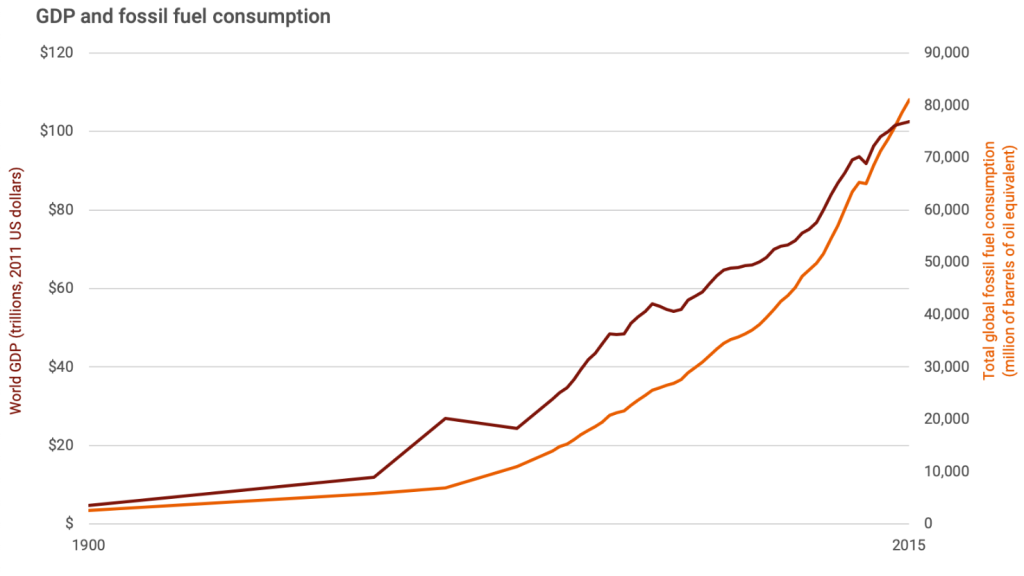Silly rhetoric about curbing carbon emissions won’t give humanity the power it needs. Our best strategy is greater use of natural gas now leading to nuclear power in the near future
By M.H. WARD, Times Colonist, June 13, 2025
The last thing the world needs is more ill-informed amateur dramatics from unruly mobs of self-styled activists.
In his June 5 opinion article, “Our only hope is to become environmental activists,” Frants Attorp tells us that “global temperatures keep rising in tandem with greenhouse gases,” but fails to present a solution other than that we must “adjust our lifestyle choices.”
He would do well to remember another tandem relationship: per capita GDP is tightly correlated with per capita energy consumption (Figure 1).

The single biggest improvement in living conditions in human history was brought about by the use of cheap, abundant fossil fuels for everything from electricity generation to industrial heat, to transportation, to fertilizers, to pharmaceuticals.
How much economic well-being, now and in the future, is Mr. Attorp willing to give up?
Around two billion people burn wood and animal dung as their only energy source for heat, light, and cooking. Imagine the effect that has on human health, life expectancy and the environment. We could have given those people electricity instead of frittering money away on the Paris Agreement or Biden’s dysfunctional Inflation Reduction Act.
Spending on Net Zero is Foolish
In poor countries, no one cares about pollution — it’s all about survival — whereas wealthy countries can afford the luxuries that improve human welfare and the environment.
Even so, that wealth has to be spent wisely. Money spent on international fads such as “net zero” is not in this category.
If Canada were to achieve its stated “net zero by 2050” goal (which it obviously won’t), the UN’s standard climate model estimates that it would make a difference of 0.02 C by 2100.
How much economic well-being are we willing to give up in exchange for a temperature difference that most of us can’t measure?
How much economic well-being are we willing to give up in exchange for a temperature difference that most of us can’t measure?
Investment advisor Michael Cembalest writes: “After spending $9 trillion globally over the last decade on wind, solar, electric vehicles, energy storage, electrified heat and power grids, the renewable transition is still a linear one; the renewable share of final energy consumption is slowly advancing at 0.3%–0.6% per year.”1 At this rate, we should be carbon-free by 2200.
A one-paragraph summary of The Hartwell Paper of 2009, “A new direction for climate policy,”2 reads: “The only way for humanity to combat both climate change and poverty is to find a path to clean energy that is plentiful and cheap, and then spend enough money to deploy it quickly.”3
Wind and solar are not the answer
Even the most die-hard wind and solar activists are beginning to understand that wind and solar are not the answer. Countries that produce a relatively high proportion of their electricity from wind and solar generally have much higher energy prices that countries that don’t.4 and the recent collapse of the electrical grid in Spain was due to that country’s high reliance on wind and solar.5
Of course, we would have been enjoying abundant, cheap, zero-carbon energy for decades at 3 cents per kWh had it not been for the activists of the 1970s. Their efforts succeeded in shackling nuclear power generation with unprecedented review processes, regulations and legal procedures from which we have never recovered.6
Fortunately, saner minds are beginning to prevail and interest in cheap, modular reactors is growing. Once the public sees through the fear-mongering and demands change, the politicians will deem it safe to jump on board.
We will not reduce carbon dioxide emissions by moralizing, demanding lifestyle changes, banning gasoline engines, or throwing cans of soup at paintings, nor do we need to “leave fossil fuels in the ground” — that’s just silly rhetoric.
The Best Policy is growth of nuclear power
The single biggest impact we could make is to replace coal with gas while we’re getting the nuclear infrastructure in place. Mr. Attorp may choose to wear a hair-shirt if he wishes, but the rest of the world isn’t going to follow his example.
In the 1970s, “scientists” predicted that oil was going to run out in the 1980s; most of the world’s oil has been discovered since then.
In 2009, John Kerry predicted that the Arctic Ocean would be ice-free by 2013; instead, there’s actually been a multi-decadal pause in Arctic ice loss7 while there’s been a record accumulation of ice on the Antarctic ice sheet over the period 2021 to 20238.
Making predictions is difficult, especially about the future, but the world isn’t coming to an end — at least, not for a few billion years.
M.H. Ward is a retired mechanical engineer with a Masters in Business Administration.
- “Eye on the Market Energy Paper: Heliocentrism,” J.P. Morgan Wealth Management, March 4, 2025 [↩]
- “The Hartwell Paper: A New Direction for Climate Policy After the Crash of 2009”, Institute for Science, Innovation and Society, University of Oxford, 2009 [↩]
- Summary comes from Roger Pielke, Jr., “A better approach to climate policy,” The Honest Broker, May 26, 2025 [↩]
- International Energy Agency [↩]
- Roger Pielke, Jr., “The Iberian Blackout.” The Honest Broker, May 1, 2025 [↩]
- see Jack Devanney, Why Nuclear Power has been a Flop at Solving the Gordian Knot of Electricity Poverty and Global Warming, 2022. Available at Archive.org. [↩]
- Mark England, et al., “Surprising, but not unexpected, multi-decadal pause in Arctic sea ice loss.” Available at https://d197for5662m48.cloudfront.net/documents/publicationstatus/251824/preprint_pdf/b01411c27b6437ece1ee53b8d3435b3a.pdf [↩]
- Wei Wang, et al., “Unprecedented mass gain over the Antarctic ice sheet between 2021 and 2022 caused by large precipitation anomalies.” Environmental Research, Letters, Nov. 9, 2023 [↩]
